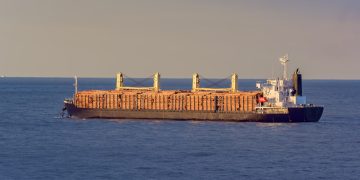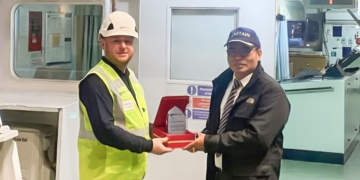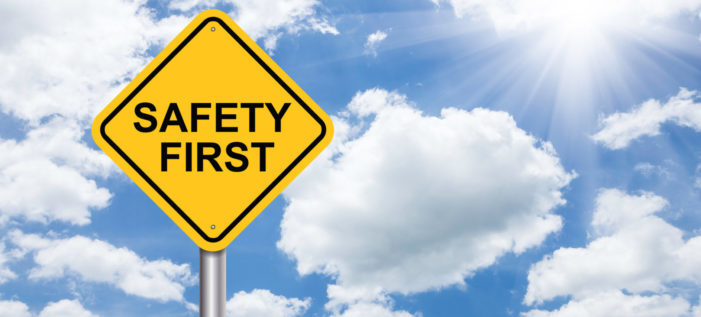While speaking at the last SAFETY4SEA Conference in Athens, Mr. Neale Rodrigues, Divisional Director, Britannia P&I Club, spoke on safety culture and management. He compared the two models of safety, starting with the current Safety-I model which is based on a reactive response, and going on to talk about Safety-II which promotes a proactive response to risk. He reviewed some of the key issues and provided suggestions for implementing effective safety management in the shipping workplace.
Safety culture is defined as a set of values, attitudes and practices that management and personnel share. An effective safety culture must have a strong commitment from the top, and requires ownership and ‘buy-in’ from all involved.
Each seafarer has his or her own interpretation of safety and it is essential for managers to understand what their definition of safety culture actually means to the seafarers on board their ships.
When maritime organizations are defining operating standards for their seafarers and managers, in accordance with their interpretation of the ISM Code requirements, they should ensure that their seafarers are involved in the process, as they are the ones who will actually follow these policies.
At present we are essentially using a safety system where the measure of safety is based on an analysis of what goes wrong. The rationale is that if we can stop things from going wrong we can improve safety standards.
Safety-I views humans as a potential liability, prone to errors. Safety-II, on the other hand, views humans, the ship staff, as a valuable resource with the ability to adapt to different situations (also referred to as ‘resilience’).
Under Safety-II, the purpose of any investigation or review is to try and understand how and why actions and processes work correctly in order to understand and explain why they occasionally go wrong.
It is worth mentioning that Safety-I and Safety-II are two complementary views of safety. As an example, navigational audits often focus simply on the watchkeeping officer’s ability to comply with company’s navigation procedures. However, it would be beneficial to additionally consider behaviour patterns.
[smlsubform prepend=”GET THE SAFETY4SEA IN YOUR INBOX!” showname=false emailtxt=”” emailholder=”Enter your email address” showsubmit=true submittxt=”Submit” jsthanks=false thankyou=”Thank you for subscribing to our mailing list”]
A good way to look a Safety-II approach is to review a simple accident. A ship was proceeding along a river at around 15 knots. There was a sudden loss of steering and one anchor was let go to one shackle in the water. When that did not work, the anchor was run out to 10 shackles, but the anchor was subsequently lost. The company’s accident investigation, under Safety-I principles, focused primarily on how to avoid losing the anchor again. Under Safety-II, a review focusing on the positive actions of the bridge team, which stopped the ship from running aground, would perhaps be more useful.
With any safety system we have to consider what the objectives are. Technologies and automation, designed to make life at sea easier, are constantly being developed. This has, however, also made ships more complex, with increasing responsibilities for ship staff. This is also often made worse by a reduction in crew numbers, with the associated fatigue and related concerns.
One safety initiative used by a number of companies is ‘near miss’ reporting, which can encourage seafarers to be more situationally aware of their working environment by identifying and eliminating problem areas or potential hazards. Some DPAs, however, tell us that do not always have sufficient time to read all the reports they receive.
So is it just compliance that matters or do we actually mean what we say? How many companies have a toolbox meeting or a debriefing after a task or a voyage has been completed?
We have created an environment where the master can potentially be overruled by anyone in the office. So who is actually in command?
When something goes wrong we are quick to blame the ship, but what about the managers ashore? How often do we look at ourselves first to check whether it was something we did, or did not do, that contributed to the problem?
The Britannia P&I Club delivers a number of technical seminars aimed at seafarers and managers. At one such series of seminars aimed at senior managers, one of the questions was “At what stage do you believe your company culture is”? One of the possible answers, using electronic feedback, was that as this was already a Safety Management System (SMS) procedure there was no additional action required. Worryingly 22% of participants selected this option.
So, what can we do to improve safety? We should view humans as a safeguard not a liability, and allow time during inspections and audits to observe human behaviour, with good safety behaviour being rewarded.
In essence, an effective safety culture is when everyone on board is concerned not just about their own safety but also the safety of their fellow crew members.
A step in the right direction is to start looking at safety as a way of life rather than simply another box to check.
Above text is an edited version of Mr. Neale Rodrigues’ presentation during the last SAFETY4SEA Conference in Athens
You may view his video presentation herebelow:
The views expressed in this article are solely those of the authors and do not necessarily represent those of SAFETY4SEA and are for information sharing and discussion purposes only.
Neale Rodrigues, Divisional Director, Britannia P&I Club – Safety Management
 Head of Loss Prevention, formerly a Master Mariner, with seagoing experience on container, RoRo, bulk, tanker, reefer and multipurpose ships. Experience in marine surveying, loss assessment & prevention, quality assurance, and the commercial, technical and operational management of container, bulk and multipurpose ships.
Head of Loss Prevention, formerly a Master Mariner, with seagoing experience on container, RoRo, bulk, tanker, reefer and multipurpose ships. Experience in marine surveying, loss assessment & prevention, quality assurance, and the commercial, technical and operational management of container, bulk and multipurpose ships.


































































A great article authored by Mr. Neal Rodrigues. It very important to promote the concept of safety II. Such articles are very useful. The companies that operate ships must also perform resiliently. This means developing closed loop near -real time information to monitor ship performance at sea or in distant ports. The feedback will provide them ability to have shared collective mental model between the ship and the shore management. This will also enable adaptation to changing operational situations both efficient and effective. Additionally, the feedback from near real time monitoring will show opportunities for refining the gap between work as planned in the SMS manuals and the work as done.
Well done, Mr. Rodrigues.
This is the approach to Safety that TMSA has driven for the past 14 years, mainly, but not limited to the tanker sector. TMSA has proved reasonably successful in addressing Safety-II with many companies.